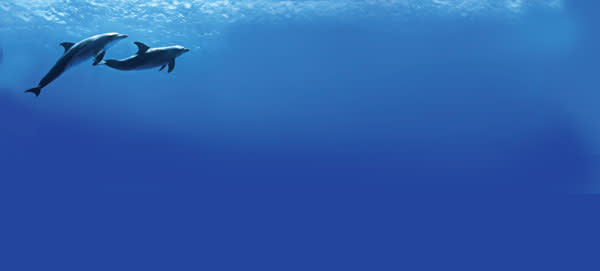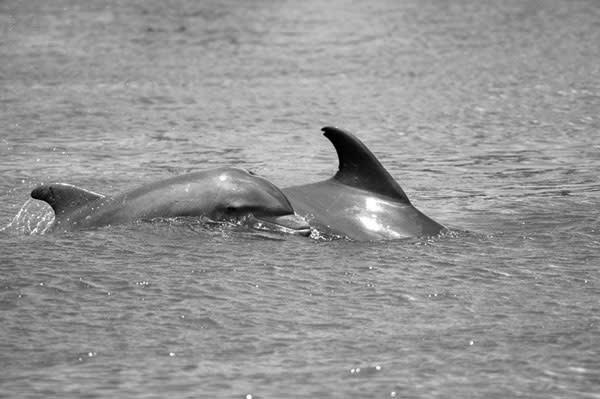The True-Life Adventures of Ginger the Dolphin

In 1970, scientist Randy Wells and others at Mote Marine Laboratory began to study the dolphins in Sarasota Bay, identifying each by distinctive marks on its dorsal fin. Today, run by the Chicago Zoological Society out of Mote, the Sarasota Dolphin Research Program (SDRP) continues to monitor the 165 or so dolphins in the bay, from newborns to 65-year-olds. The study, the longest-running of a group of wild dolphins, has revealed many secrets of their complex behavior and relationships. Here, program director Wells tells us about one of those dolphins, a female that researchers call Ginger.
1975
We meet Ginger’s 16-year-old grandmother, FB 13, during tagging operations in northern Sarasota Bay.
1995, September
Ginger’s mother, Edamommy, is born. She is the third calf we have seen with FB 13 over the years. Females raise one calf at a time. We’ve seen mothers with a series of as many as 10 calves in Sarasota Bay.

2005, June
Ginger is born. She’s the first calf for Edamommy, who is now 10. Most Sarasota Bay dolphins give birth for the first time at 9, though we’ve seen females as young as 6 and as old as 48 giving birth. Most calves are born from May to July. First-born calves are less likely to survive than subsequent calves, with only 61 percent surviving their first year of life. That could be the result of their mother’s inexperience.
2008, May-September
Ginger begins to spend less time with her mother. Typically, mother and calf remain together for about three to six years, until the birth of the next calf. In June, Ginger’s brother, Wasabi, is born. Over the next months, we see Ginger alone or in small groups, but rarely with her mother or baby brother.
2008, December
Beach-goers at the north end of Siesta Key report that Ginger has stranded. She’s brought to Mote’s dolphin hospital, where she’s treated for pneumonia, dehydration and gastrointestinal issues. We wonder if her stranding is related to her fairly early separation from her mother. Because wild dolphins often die from ingesting or becoming entangled with fishing gear, at Mote we feed her live local pinfish with no human in sight, so she won’t associate food with human activity.
2009, February
Ginger has recovered, and she’s released with a radio tag to help us monitor her progress back into the wild. She remains within her previous range, and begins interacting with other dolphins. Much to our relief, she does not interact with anglers.
2009, July
Ginger’s grandmother, FB 13, dies at 50 years of age. Her death may have been related to blunt trauma, with the most likely possible sources being a collision with a boat or another dolphin.
2010, May
We perform a health assessment of Ginger in the wild, and she is found to be in excellent health. She has frequently been observed feeding, often along seawalls or other structures that limit fish movements, capturing fish such as pinfish and mullet.
2015, August
Now 10, Ginger is seen with her first calf! Mother and calf are with 6-year-old Nellie, a dolphin our researchers disentangled from fishing line when she was 9 months old. Dolphins are highly social, and perhaps Nellie is learning from Ginger what it takes to be a good mother.
2015, September
Ginger and her calf are spending time in nursery groups with other mothers and young calves. Over her lifetime so far, Ginger has been seen 366 times by the SDRP, helping us to understand what it takes for these animals to continue to survive and thrive in Sarasota Bay. That research has led NOAA to use Sarasota Bay dolphins as its primary reference population in investigating the impacts of the Deepwater Horizon oil spill and other mortality events.



